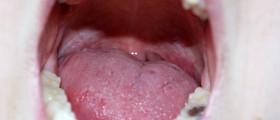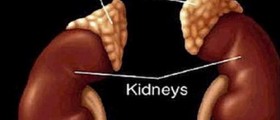There are several different benign tumors that can develop inside the oral cavity. The most frequent two are a papilloma and fibroma. Apart from these the oral cavity can be a site of other benign lesions which do not occur so frequently but once they develop, they can be a significant cause of trouble.
Papilloma and Fibroma of the Oral Cavity
Papilloma is a benign growth made of epithelial tissue. Clinically, there is no difference between a papilloma and verruca vulgaris, therefore the tumor can be confirmed only after excision and pathohistological examination. The tumor is generally stalked and with cauliflower-like surface. It can also have a wide base and be of smoother surface. Papillomas are slow-growing tumor masses and they generally remain benign, not evolving into cancers. They form due to local trauma and irritation. Sometimes their growth is induced by viruses.

Fibromas are another common benign growths of the oral cavity. These tumors contain connective tissue which is their essential constituent. This is a rather rare tumor. It can clinically resemble irritant hyperplasia. The tumor is solid and stands separately compared to other tissues (is well-demarcated). Fibromas are round and covered by ordinary oral mucous membrane. Similarly to papillomas, the most common cause of fibromas is local trauma and irritation of the oral cavity. However, fibromas may progress and develop into malignant tumors.
- Of all the tumors studied, 53% were histologically diagnosed as fibroma.
- In the study of prevalence of benign tumors of the oral mucosa, no differences were found for age; however there were differences according to gender, finding a greater prevalence of fibromas, pyogenic granulomas, and giant cell granulomas in women, at a ratio of 2:1.
- The group of tumors studied showed a significantly asymptomatic behaviour, and self-limiting and slow growth.
- With respect to the possible etiologic agents, we found no statistically significant differences between them.
Other Benign Oral Cavity Lesions
Apart from papilloma and fibroma the oral cavity can be affected by a variety of benign lesions. Some of them are granular cell tumor (myoblastoma), fibroepithelioma, hemangioma, lipoma and there are also benign tumors of salivary glands.
Benign Oral Tumors Symptoms
In the majority of cases oral tumors are reported as lumps that may affect different parts of the mouth such as the tongue, cheeks, etc. Once the tumor develops, it does not withdraw spontaneously, it can only get bigger. In some cases, there is bleeding from the lump and some tumors are covered with ulcers. Their presence, particularly if tumors are large enough, interferes with chewing, swallowing, and speaking.
Benign Oral Tumors Treatment
Every lump inside the oral cavity which is suspicious must be surgically removed and pathohistologically examined. This way the tumor is either classified as benign or malignant.
Unlike malignant oral tumors, benign tumors grow gradually and slowly. They may remain the same size for years. Still, even if the tumor has benign clinical characteristics it needs to be pathohistologically examined. Furthermore, some benign tumors may eventually progress into malignant ones. Therefore, their resection is actually a prevention of a malignant disease.

















Your thoughts on this
Loading...